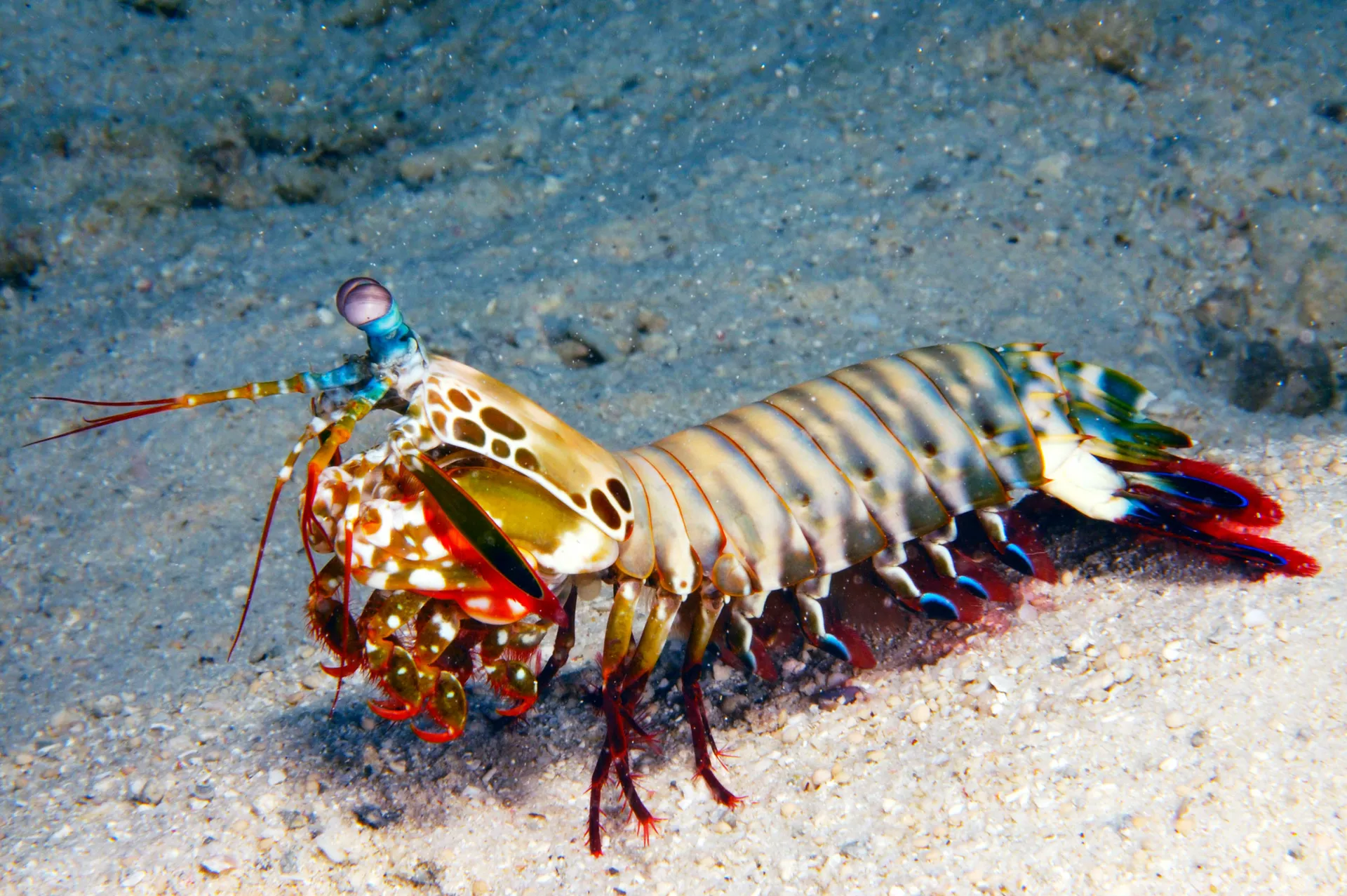Important Facts For Prelims
Mantis Shrimp and Metamaterials
- 23 Apr 2025
- 4 min read
Why in News?
A new study has revealed that the mantis shrimp’s hammer-like limb delivers powerful blows and also uses a natural recoil-dampening system, challenging previous beliefs about metamaterials and energy control.
- This work not only highlights the evolutionary genius of the mantis shrimp, but also opens new frontiers in material science and bioengineering.
What are the Key Research Findings on Mantis Shrimps?
- Researchers found that the mantis shrimp's striking appendage acts as a natural phononic metamaterial (materials that block or control mechanical waves like sound or vibrations).
- The club structure provides dual mechanical advantages—it both withstands force and controls energy propagation.
- Its hierarchical structure includes:
- A hydroxyapatite surface (a hard mineral also found in human bones and teeth) that disperses impact
- Spring-like tendons (elastic structures that help absorb shock)
- Biopolymer fibers arranged in a periodic pattern (repeating natural fibers that reduce impact damage from repeated strikes)
- The study confirms that nature has evolved metamaterials, changing how scientists understand biological material design.
What are Mantis Shrimps?
- About:
- Mantis shrimp are ancient marine crustaceans belonging to the order Stomatopoda, closely related to crabs and lobsters.
- With over 450 known species, they range in size from 10 cm to nearly 46 cm.
- Despite their name, they are not true shrimp but are distinguished by their vibrant colors, complex behavior, and powerful hunting appendages.
- Mantis shrimp are ancient marine crustaceans belonging to the order Stomatopoda, closely related to crabs and lobsters.
- Habitat:
- Mantis shrimp inhabit warm, shallow tropical and subtropical waters, particularly in the Indian and Pacific Oceans.
- They live in self-dug burrows within seabeds—smashers in harder substrates and spearers in soft ones—near coral reefs.
- Mantis shrimp inhabit warm, shallow tropical and subtropical waters, particularly in the Indian and Pacific Oceans.
- Hunting Mechanisms: Mantis shrimp are categorized into two main types based on their hunting adaptations:
- Spearers: Possess spiny, barbed forelimbs used to impale soft-bodied prey like fish, squid, and worms.
- Smashers: Have heavily calcified, club-like appendages capable of delivering one of the fastest strikes in the animal kingdom, used to break open hard-shelled prey like snails, crabs, and clams.
- Ecological and Scientific Significance: Their club mechanism has inspired biomimicry in armor and aerospace engineering
- Eye structure is influencing optical sensor and cancer detection technology
- They help control prey populations in reef ecosystems and contribute to nutrient cycling.
- Researchers are also investigating methods to convert trapped mechanical energy into other usable forms, potentially leading to energy-harvesting applications.
What are Metamaterials?
- About: Metamaterials are artificially engineered materials designed to exhibit properties not found in nature.
- Their unique behaviour arises from their internal structure and arrangement, not from the base materials they’re made of.
- Key Properties:
- They often display unusual electromagnetic properties, such as a negative refractive index.
- This makes them valuable in fields like optics, telecommunications, and electromagnetism.
- Their behaviour is comparable to materials like graphite, diamond, and graphene—which all consist of carbon but differ drastically due to structural arrangement.





